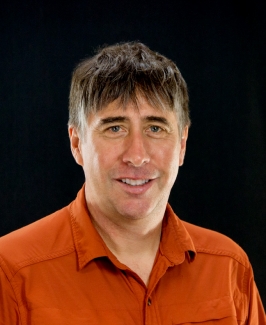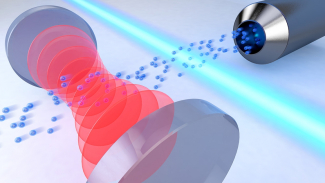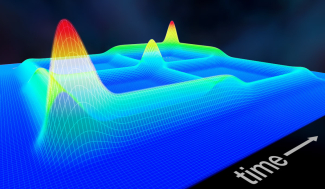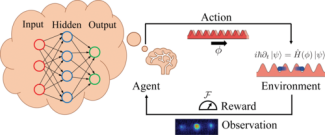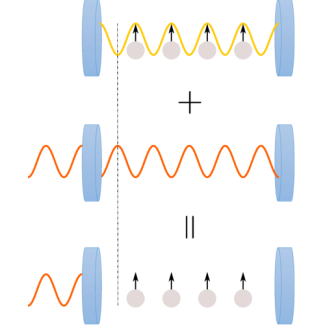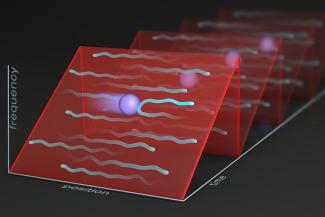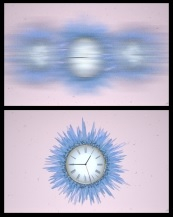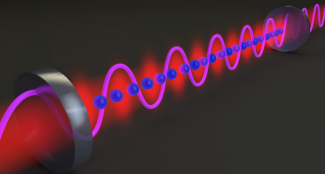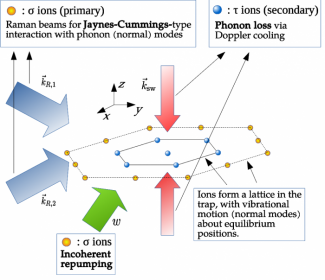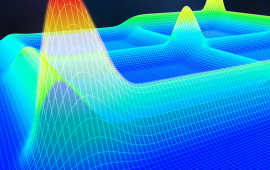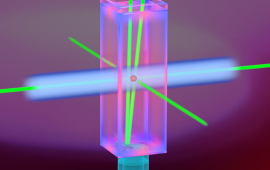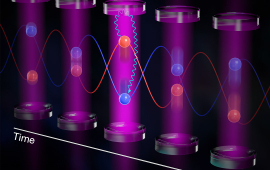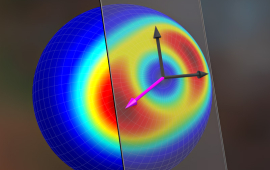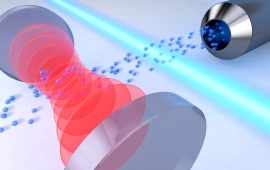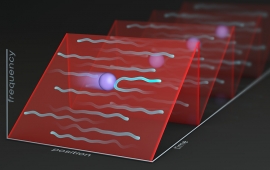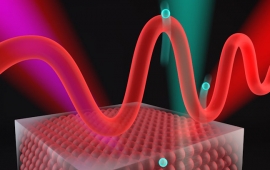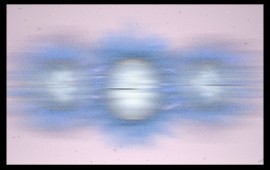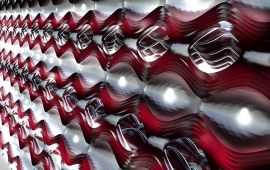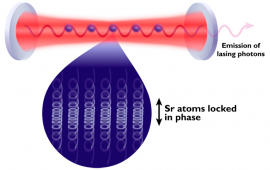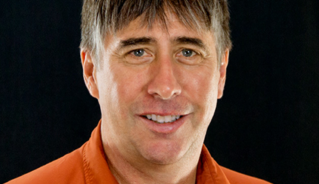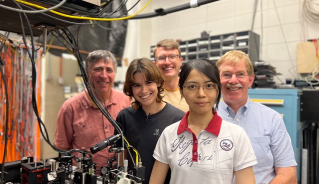About the Holland Group
Our quantum optics theory group primarily explores light-matter interactions in cold quantum gases, with a focus on quantum sensing, open quantum systems, and applying machine learning to quantum design problems. The group collaborates with experimentalists at JILA to develop quantum metrology platforms that utilize interparticle entanglement to sense with a quantum advantage. In addition, the group is part of NASA’s Quantum Pathways Institute to manufacture space-bound quantum-based instruments to be used for navigation and climate science. A focal point of our group's metrology research is utilizing Lie group symmetries to extend entanglement generation protocols to higher dimensional systems. The group also works on bad-cavity QED systems to help realize a continuous-wave superradiant laser that would have a coherence length stretching from the Earth to the Sun, which would help enable the development of active atomic clocks.
Research Areas
Stories About Our Research
Research Highlights
In the Spotlight
The U.S. Department of Energy (DOE) has announced a $625 million investment to advance the next phase of the National Quantum Information Science Research Centers, a cornerstone of the National Quantum Initiative. This funding will support five centers dedicated to accelerating quantum technologies that promise transformative impacts on science, industry, and national security. JILA is proud to remain a key partner in QSA through the Q-SEnSE Center, which focuses on quantum sensing and precision measurement.
Read More
CU Boulder has proudly announced the winners of its prestigious 2023-2024 Translational Quantum Research Seed Grants, a crucial step in fostering quantum science and technology innovation. This year's selection includes JILA Fellow Murray Holland, a distinguished figure in the field of quantum physics, who has been recognized for his groundbreaking project, "Developing a strontium optical lattice atom interferometer."
Read More
Leading the way in quantum sensing advancements, JILA, a renowned institute at the forefront of quantum sensing research, has once again proven its prowess. In a new Physics Magazine article, JILA graduate student Jarrod Reilly was highlighted in his work developing a groundbreaking approach that promises to redefine the capabilities of quantum sensors.
Read More
JILA (a world-leading physics research institute set up by NIST and the University of Colorado Boulder) is part of a multi-university research group that will build quantum-based tools for space-based Earth sensing. NASA expects to award a $15 million grant for five years to the group of universities. This cohort includes researchers from the University of Texas at Austin, JILA, the University of Colorado Boulder (CU), the University of California Santa Barbara (USCB), the California Institute of Technology (Caltech), and the U.S. National Institute for Standards and Technology (NIST). “The award establishes the Quantum Pathways Institute, supported by a NASA STRI (Space Technology Research Institute), led by Prof. Srinivas Bettadpur of the University of Texas at Austin, Texas, with CU and UCSB as collaborating institutions,” explained Dana Anderson, a JILA Fellow and CU Boulder professor who is involved in the project. The Quantum Pathways Institute is the first of its kind, as it strives to translate the capabilities of quantum physics into usable devices called “Quantum 2.0.” Besides these developments, the Institute will offer educational training for graduate students and postdocs in quantum theory and quantum experimentation.
Read More
JILA Address
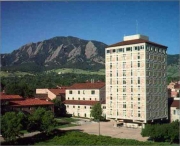 We are located at JILA: A joint institute of NIST and the University of Colorado Boulder.
We are located at JILA: A joint institute of NIST and the University of Colorado Boulder.
Map | JILA Phone: 303-492-7789 | Address: 440 UCB, Boulder, CO 80309





